There are just a few things that really scare me about this whole tiny house thing:
- Actually towing it down the road, ever (no matter who does the driving). This thing is likely to weigh about 10,000# and by the time it’s done will represent four years of work and rather a lot of money spent. If anything happens en route, I will be… very sad.
- Turning on the power system. I’ve actually installed 30A/240V sub panels several times without incident. I’ve put in countless residential circuits from minor stuff up to heavy stuff like an electric dryer. I’m not at all afraid of working with electricity. But this system is surprisingly complex and has a lot of high-energy parts, like the battery bank that can hold four days of energy and the DC lines that carry over 100A. If something goes wrong, there’s a decent chance it will go very wrong.
- The propane stuff. I’ve done plenty of plumbing and I know most of the propane system can be tested for safety (pressurize with air, check for leaks with soapy water) before any propane enters the picture. Still, if something goes wrong, there’s some chance it goes very wrong.
- The water system. What? The water system?? Yep. The water system. Today I did a water system test I’ve been putting off for some time because of the consequences of failure… and it was terrifying for about half an hour til I was done.
So what, besides a little water somewhere I didn’t want it to go, is the consequence of a water system failure? Well, let me put it into perspective for you. There is the in-ceiling gray water tank. That tank holds about 50 gallons, which translates to just over 400#. I’ve load tested the tank once before and it was fine… but since then there was the mishap with the power center that impacted some of the tank parts and might have damaged them. But the real terror wasn’t that. The real terror was filling the fresh water tank. That’s another 50 gallons, for nearly 830 pounds of water. That is a lot of water and the storage/utility loft has to carry all of it.
What happens if it doesn’t? Well, the loft collapses, the ceiling mural is destroyed, a hundred gallons of water empty into the interior of the house, filter through the plywood deck of the floor, get into the insulation bays, and, hopefully, dribble out the seams in the flashing at the very bottom. It means some very wet plywood. It means insulation compartments that now need to be opened up, removed of their insulation (thankfully this is rigid foam blocks, not fluff of any kind) so they can dry out quickly and not get moldy. This is done from underneath the house, face up on my back in close quarters. Then I have to figure out how to get the insulation back in there — it was challenging to put it in at first, from the top, with nothing in the way. Putting it back in from the bottom would be no fun at all. Having mold under the floor, that would be a really big problem.
So, yeah, the prospect of load testing the SUL with 800+ pounds of water was kinda nerve-wracking. Today I did it.
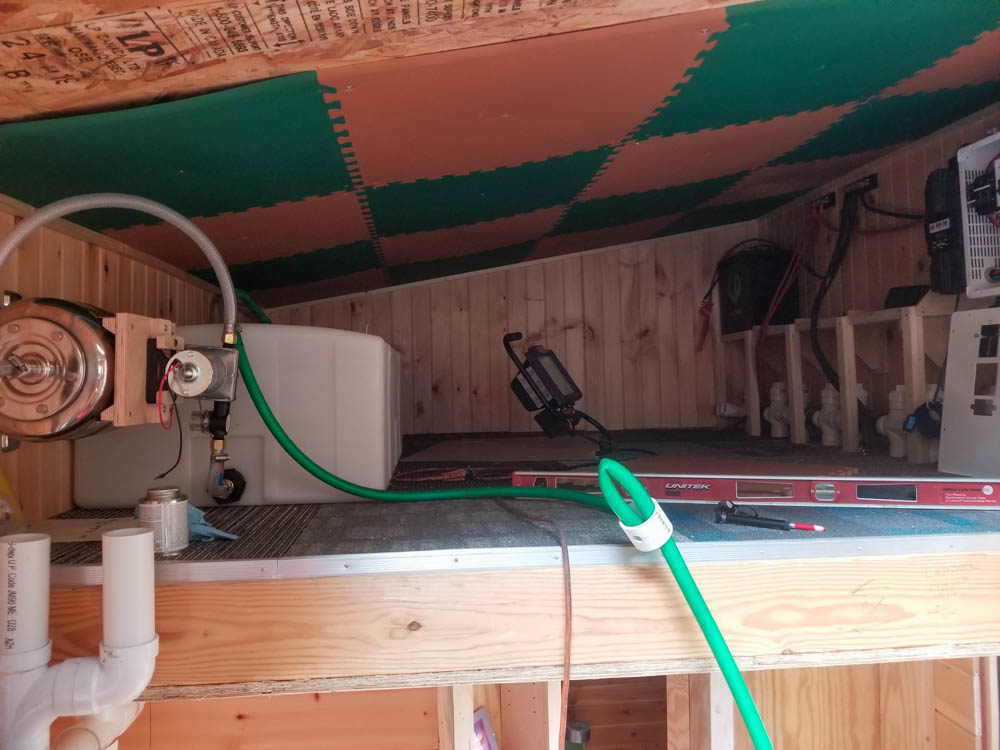
First, grab a scrap of pipe to use as a hose clamp. I was in no position to turn the water off from up here.
Next, fill the fresh water tank. It may not look 100% full, but remember the thing has thick walls so the inside “top” is lower than the outside top. This tank is basically full, with a little headroom for air.
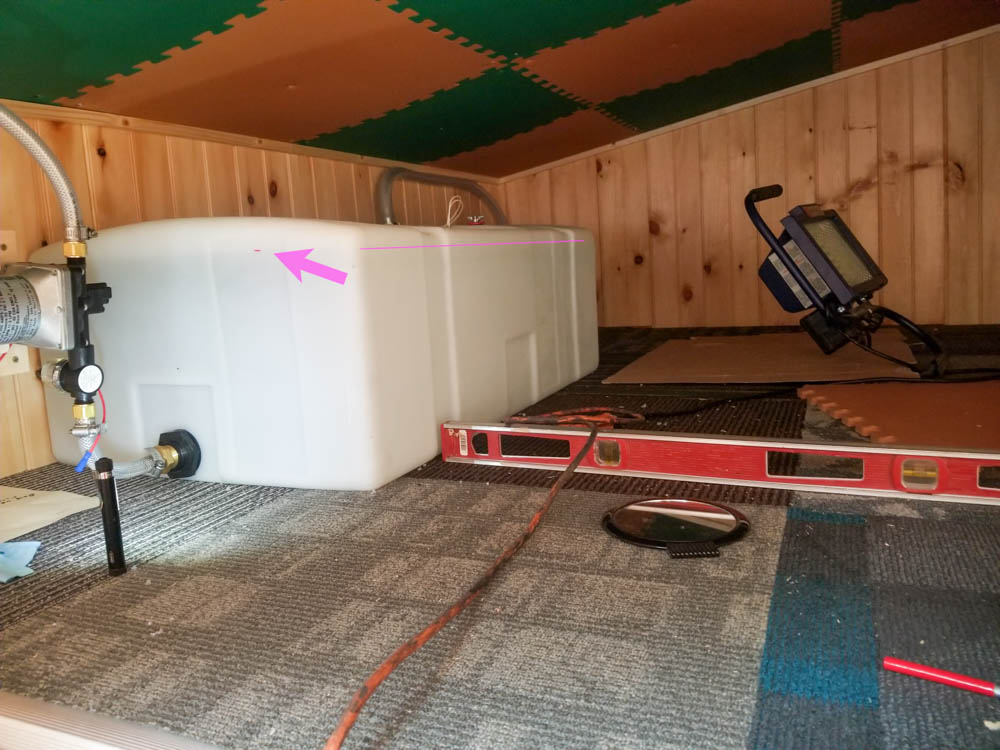
So far so good. To help put me at ease, I had my 4ft level across the deck, too, so I could monitor for any sagging if there was to be any.
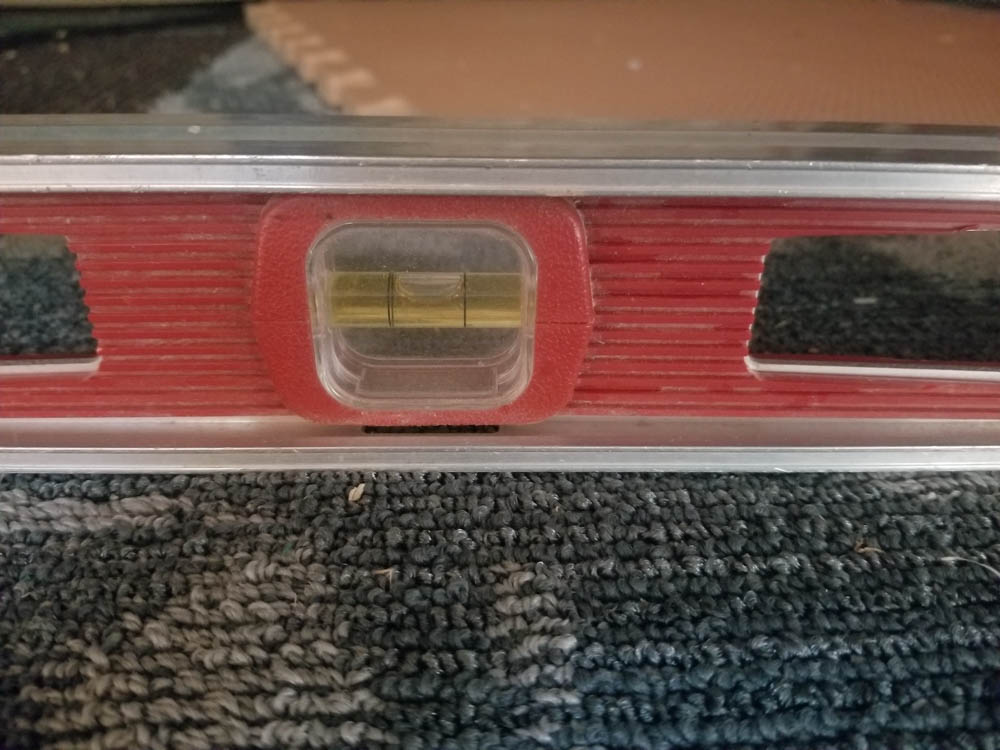
So far, so good. Now to load the gray water tank, too, so the full load is borne.
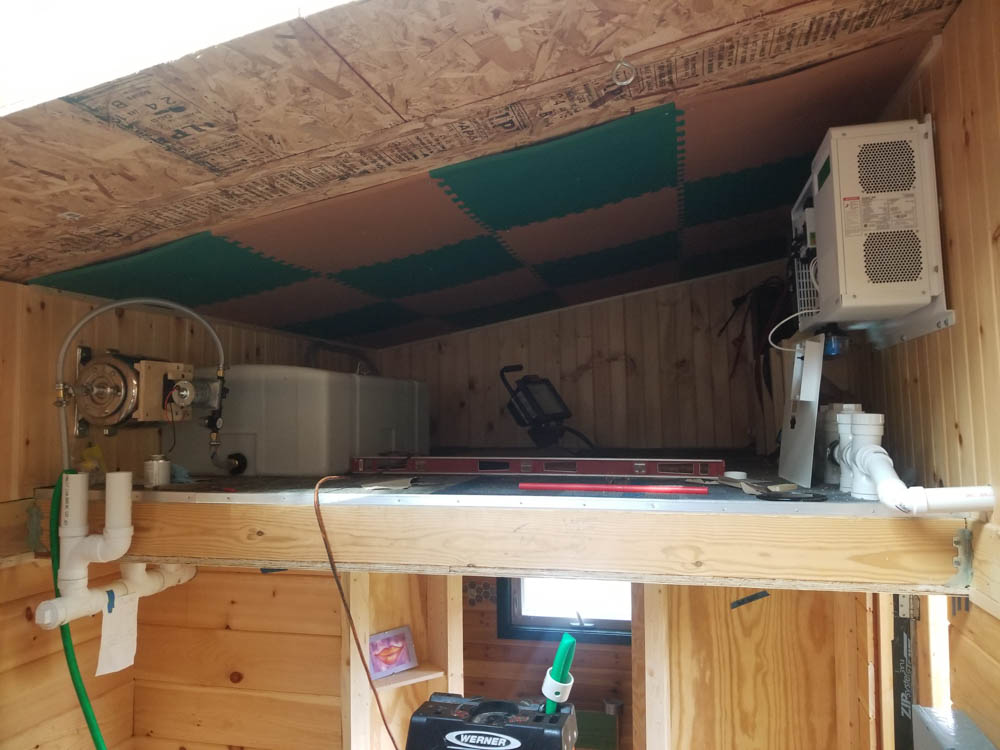
This is the scene after filling the in-ceiling gray water tank. The fresh water tank (left) is still full. There it is, over 800# of water and nothing bad happened. I am now able to breathe again.
I inspect all around and find that there do not appear to be any leaks as result of the power center falling onto the pipe heads that one time. I do find some water in the T.H.R.O.N.E. Room, however, directly below. That water doesn’t have anything to do with the tanks, though.
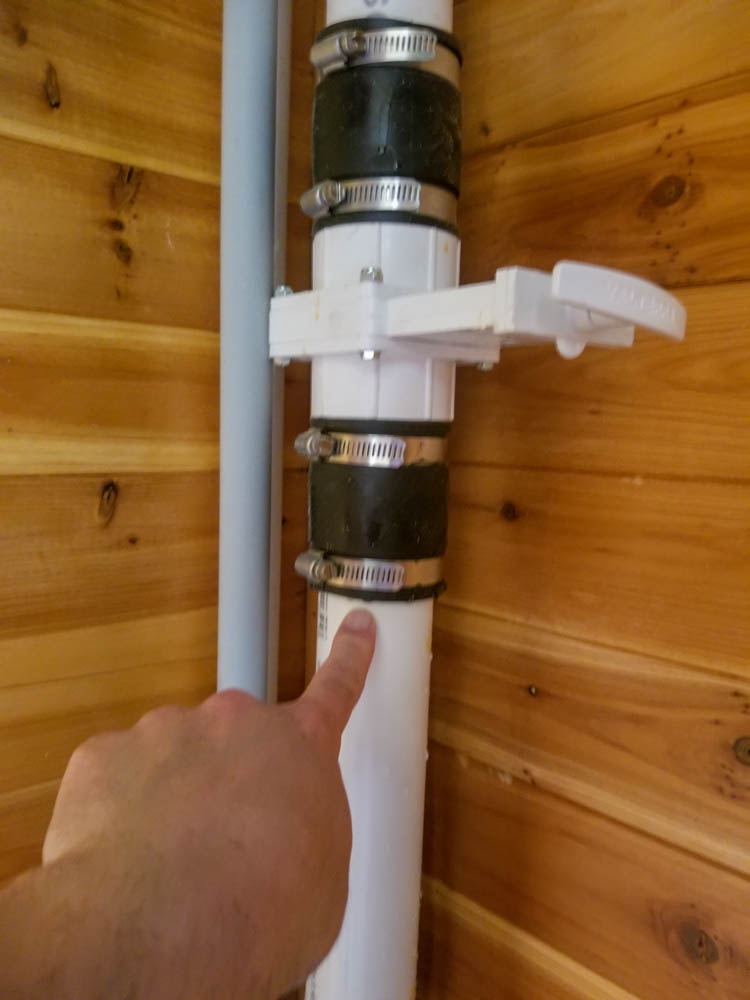
It turns out the bottom rubber collar for the gray water release valve was a little loose and with the full weight of all that water above it, leaked some. A few turns of the screws on the band clamps and everything was fine again.
So after all is done, the load test passed and nothing bad happened (yay). A little leakage from the collar was easily remedied (and mopped up). The floor in the T.H.R.O.N.E. Room is already installed and is waterproof and the walls are dressed in cedar, so no problems there, either.
I did hear the deck creak a little as the water got loaded on, but a little creaking for 800+ pounds of load is totally reasonable. It didn’t deflect enough to even notice on the bubble level.
I can cross one thing off the terror list!
There is actually one thing I need to deal with that I hadn’t thought of: condensation on the exterior of the fresh water tank. Adding cold water to it on a humid day made it sweat. The gray water tank may have a similar issue, though it’s in a better position to be temperature equilibrated and isn’t likely to encounter humid air the same way the big FW tank does because it’s sealed into the ceiling. Anyway, there is nothing I can do about it because it’s sealed into the ceiling. So I hope it’s ok.